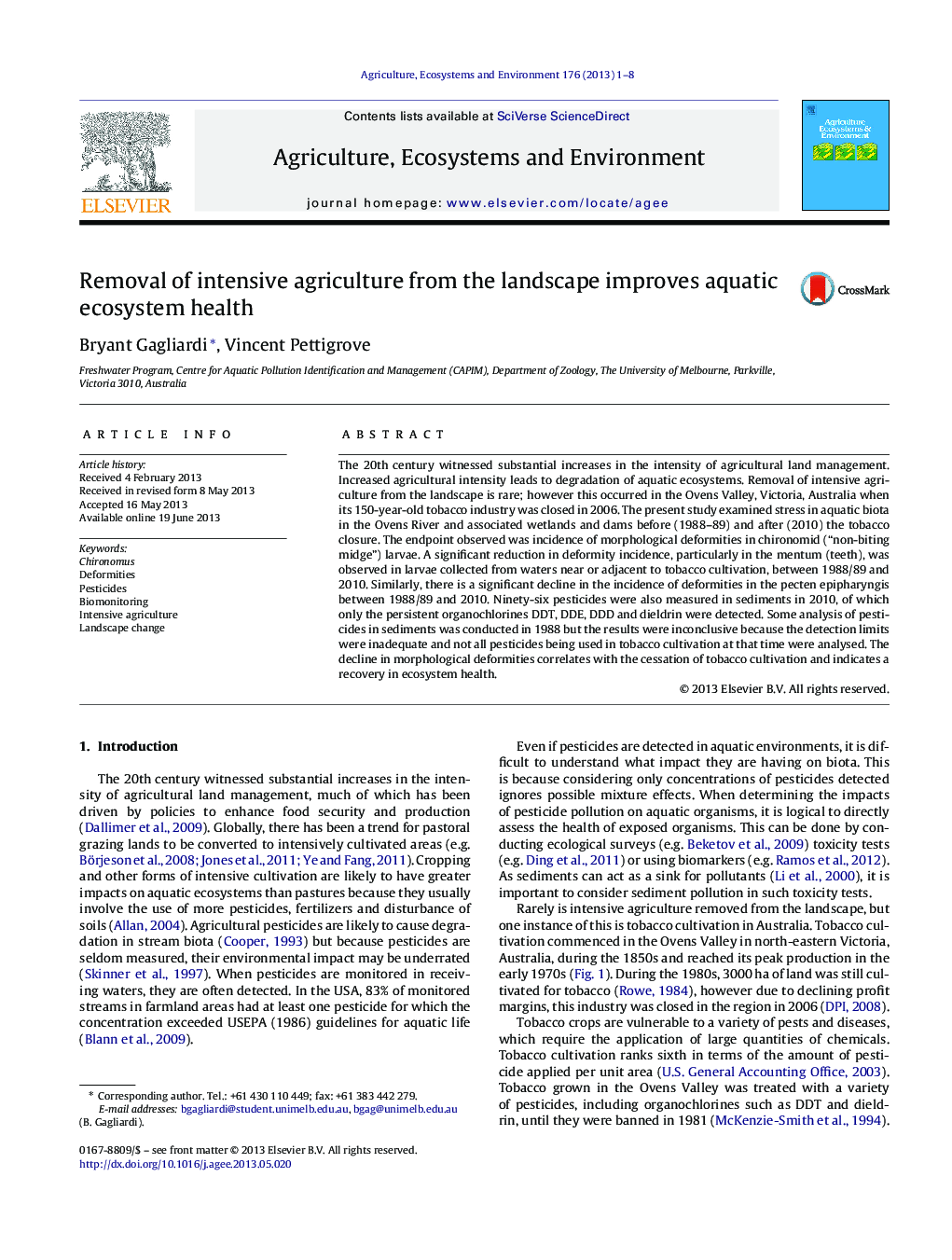| Article ID | Journal | Published Year | Pages | File Type |
|---|---|---|---|---|
| 2414244 | Agriculture, Ecosystems & Environment | 2013 | 8 Pages |
•Intensive tobacco cultivation ceased in the Ovens Valley, Australia, in 2006.•Post-cessation, we observe reduced mentum deformities in aquatic Chironomus larvae.•We also observe reduced pecten epipharyngis deformities in Chironomus larvae.•Results suggest removal of intensive agriculture has reduced environmental stress.•Bioindicator results prove informative in the absence of definitive chemical data.
The 20th century witnessed substantial increases in the intensity of agricultural land management. Increased agricultural intensity leads to degradation of aquatic ecosystems. Removal of intensive agriculture from the landscape is rare; however this occurred in the Ovens Valley, Victoria, Australia when its 150-year-old tobacco industry was closed in 2006. The present study examined stress in aquatic biota in the Ovens River and associated wetlands and dams before (1988–89) and after (2010) the tobacco closure. The endpoint observed was incidence of morphological deformities in chironomid (“non-biting midge”) larvae. A significant reduction in deformity incidence, particularly in the mentum (teeth), was observed in larvae collected from waters near or adjacent to tobacco cultivation, between 1988/89 and 2010. Similarly, there is a significant decline in the incidence of deformities in the pecten epipharyngis between 1988/89 and 2010. Ninety-six pesticides were also measured in sediments in 2010, of which only the persistent organochlorines DDT, DDE, DDD and dieldrin were detected. Some analysis of pesticides in sediments was conducted in 1988 but the results were inconclusive because the detection limits were inadequate and not all pesticides being used in tobacco cultivation at that time were analysed. The decline in morphological deformities correlates with the cessation of tobacco cultivation and indicates a recovery in ecosystem health.
